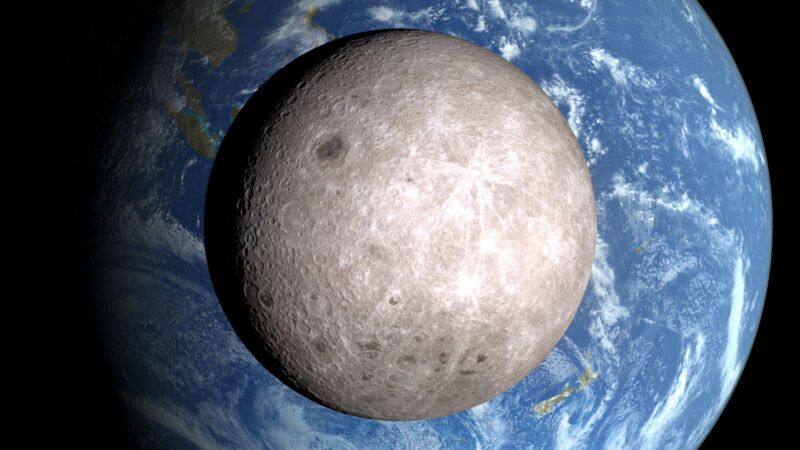
Lunar exploration is undergoing a renaissance. Dozens of missions, organized by multiple space agencies—and increasingly by commercial companies—are set to visit the Moon by the end of this decade. Most of these will involve small robotic spacecraft, but NASA’s ambitious Artemis program aims to return humans to the lunar surface by the middle of the decade.
There are various reasons for all this activity, including geopolitical posturing and the search for lunar resources, such as water-ice at the lunar poles, which can be extracted and turned into hydrogen and oxygen propellant for rockets. However, science is also sure to be a major beneficiary.
The Moon still has much to tell us about the origin and evolution of the Solar System. It also has scientific value as a platform for observational astronomy.
The potential role for astronomy of Earth’s natural satellite was discussed at a Royal Society meeting earlier this year. The meeting itself had, in part, been sparked by the enhanced access to the lunar surface now in prospect.
Far side benefits
Several types of astronomy would benefit. The most obvious is radio astronomy, which can be conducted from the side of the Moon that always faces away from Earth—the far side.
The lunar far side is permanently shielded from the radio signals generated by humans on Earth. During the lunar night, it is also protected from the Sun. These characteristics make it probably the most “radio-quiet” location in the whole solar system, as no other planet or moon has a side that permanently faces away from the Earth. It is, therefore, ideally suited for radio astronomy.
Radio waves are a form of electromagnetic energy—as are, for example, infrared, ultraviolet, and visible-light waves. They are defined by having different wavelengths in the electromagnetic spectrum.
Radio waves with wavelengths longer than about 15 m are blocked by Earth’s ionosphere. But radio waves at these wavelengths reach the Moon’s surface unimpeded. For astronomy, this is the last unexplored region of the electromagnetic spectrum, and it is best studied from the lunar far side.
Observations of the cosmos at these wavelengths come under the umbrella of “low-frequency radio astronomy.” These wavelengths are uniquely able to probe the structure of the early Universe, especially the cosmic “dark ages”—an era before the first galaxies formed.
At that time, most of the matter in the Universe, excluding the mysterious dark matter, was in the form of neutral hydrogen atoms. These emit and absorb radiation with a characteristic wavelength of 21 cm. Radio astronomers have been using this property to study hydrogen clouds in our own galaxy—the Milky Way—since the 1950s.
Because the Universe is constantly expanding, the 21 cm signal generated by hydrogen in the early Universe has been shifted to much longer wavelengths. As a result, hydrogen from the cosmic “dark ages” will appear to us with wavelengths greater than 10 m. The lunar far side may be the only place where we can study this.
The astronomer Jack Burns provided a good summary of the relevant science background at the recent Royal Society meeting, calling the far side of the moon a “pristine, quiet platform to conduct low radio frequency observations of the early Universe’s Dark Ages, as well as space weather and magnetospheres associated with habitable exoplanets.”
reader comments
126